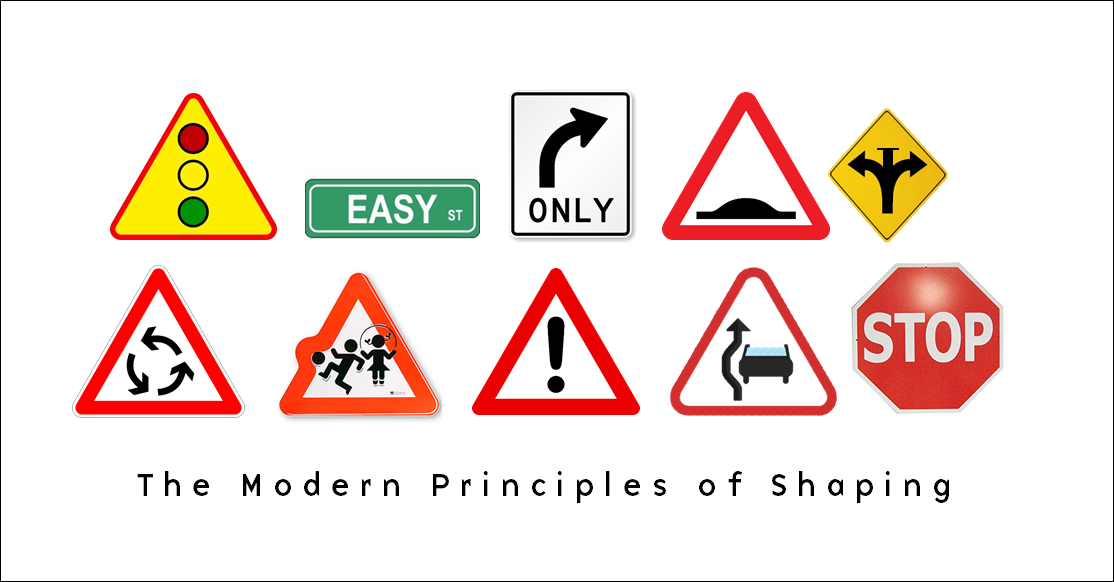Back in 1984, Karen Pryor wrote the 10 Laws of Shaping into her book Don’t shoot the dog.
That book, and those laws, have been extremely influential in shaping the contemporary animal training community. But inevitably, some of those laws became outdated.
So, 30 years later, she and her team updated them – they’re now called the Modern Principles of Shaping.

The video below is from my Advanced Animal Training (AAT) course, where I explain what the Modern Principles are all about – and how to use them in your training.
And what those traffic signs are all about.
(If you’re unfamiliar with shaping, imagine it’s like going up a staircase from where-you-are to where-you-need-to-be. On each step is a new criterion that is reinforced – as you progress up the staircase, stop reinforcing old criteria on previous steps. Shaping is one of several ways of getting behaviour.)
Click the CC-button at the bottom right to get English subtitles.
If you’re unfamiliar with the concept of loopy training and garbage, check out this blog post by Hannah Branigan.
Also, here’s a blog post by Lori Chamberland discussing how and why the revision was made.
Alexandra Kurland has a tweak on the “change one criterion at a time” principle: she rephrases it as “change one side of the click at a time”.
Alexandra partitions the training loop into a skill-building side (behaviour), and the reinforcement process side. As to the reinforcement side of the loop: as trainers, we have full control of it. With regards to the skill-building side: behaviour will emerge from the animal, and rather than wait for extinction of unwanted behaviour, the behaviours offered will change by changing the reinforcement side. By changing how we deliver reinforcement, the next element in the behaviour progression will start to pop out. Then we can start selecting for the next criterion. Once the behaviour side of the loop is clean, we can change the reinforcement side again. By alternating between focusing on varying reinforcement and selecting higher-criteria behaviour, we build the variability from which to select our next criterion. This leads to diminished frustration, and a procedure that’s closer to errorless.
The bonus interview with Ken Ramirez that I refer to in the video is accessible for students of the AAT course – find out more here.
***
Interested in the AAT course? I offer it once a year – sign up below and I’ll let you know when it opens for admission! I’ll also keep you posted on blog posts, free webinars and masterclasses, silly experiments and my other online courses – all about animal behaviour, learning and wellbeing!
2 replies on “The Modern Principles of Shaping”
Finally, a definition of “loopy” training and garbage I can understand. To avoid garbage I will use my own words: ‘a tight behavior cycle’ gets the behavior, only get this behavior, and not something else before the behavior or after. Nice demo of duration. The word loopy has confused me for a long time and carries a negative connotation. From the dictionary:
loop·y
/ˈlo͞opē/
adjective
1.
INFORMAL
crazy or silly.
“the author comes across as a bit loopy”
2.
having many loops.
“a big, loopy signature”
oh, of course – didn’t fully realize that word carried such a connotation! 🙂